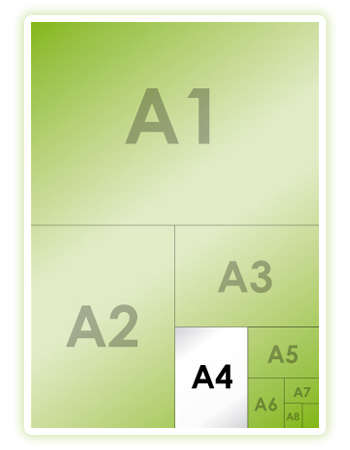

Of course, if you are from the US, Canada and Mexico you may not be so familiar with A-series papers, but with letter paper. At 8.5″ x 11″ (21.6cm x 27.9cm), a letter page is similar to A4 but slightly wider and shorter. Although in use since the 1920s, it became the official standard paper size for the US government in the 1980s. This “magic aspect ratio number” (1:1 to √2), was first suggested by Lichtenberg Gesellschaft back in 1786. And this is why we don’t have nicely rounded metric lengths: the 1:1 to √2 ratio does not permit it. If you take an A0 paper size and fold it 4 times in half, you’ll end up with an A4 size which is exactly 8.25″ x 11.67″ (21cm x 29.7cm). Why that specific ratio and not just 1m x 1m dimensions? Well, because, again, this is the most cost-effective way when you want to produce new sizes from a piece of a larger paper sheets. You see, A0 paper size is exactly 1sq.m in size (don’t forget that this is based on the metric system) with a dimension ratio of 1:1.41.

And it’s here where everything finally start to make sense. Why is that important? Well, because it makes scaling from one size to another extremely easy as the aspect ratio is not compromised. So everything is based on the largest in the range: A0. One A4 paper will make two A5’s and so on and so forth: Photo: Creative Commons Well, the thing about the A-series is the fact that each paper size is exactly half the size of the previous paper: for example, if you take an A3 sheet and fold it in half you’ll have exactly two A4 papers. So, why these indeed weird dimensions on the A0, A1, A2, A3, A4, A5, A6, A7 and A8 papers?

This standard was set in 1975 and it was actually based on a standard paper size that was used in Germany since 1922.
#A4 paper size iso
The most popular paper sizes are the ISO A-series which are based on the metric system.


 0 kommentar(er)
0 kommentar(er)
